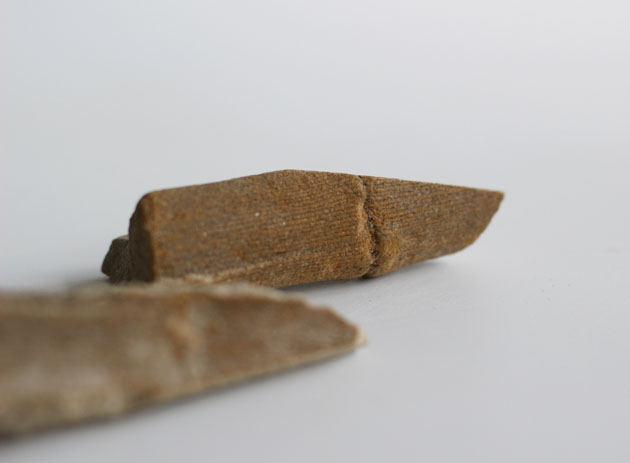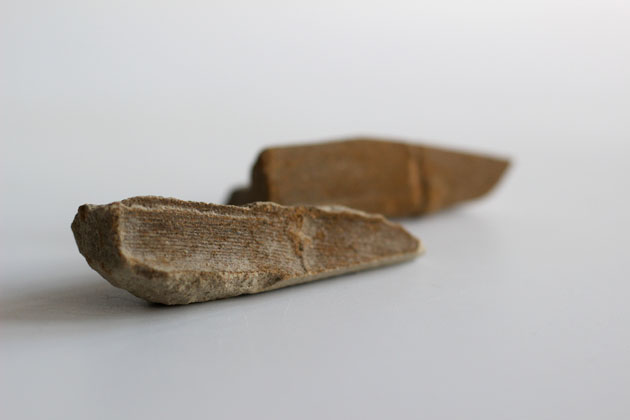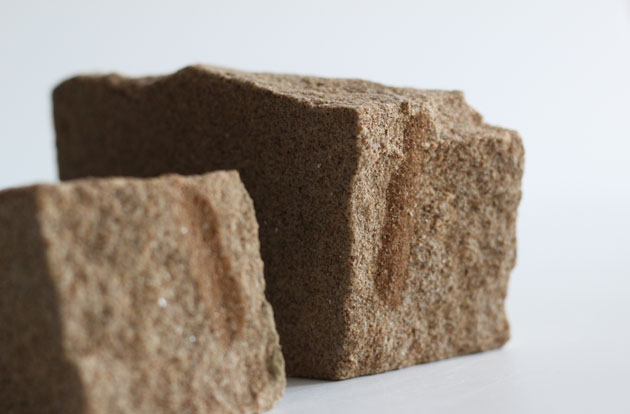Is my fossil a Rough Horsetail?

From time to time I find fossils in the sandstone I’m carving – most always they look like plant stems or leaves, and occasionally seed pods. It is always a rather exciting revelation as I excavate them, trying to keep the fossil complete. The reason these discoveries are so compelling is that they represent plants living millions of years ago, roughly 320 million years ago in fact, in the Carboniferous period (as the stone is a carboniferous seam sandstone).
During the carboniferous many new groups of plants evolved and great forests grew in the tropical swamps and deltas. Trees were not like those we know today, but mainly clubmosses and horsetails, and the earliest gymnosperms (seed-bearing plants) like conifers and seed ferns also developed.

At the moment I’m reading a book called The Lost Carving by David Esterly – and enjoying it immensely – but my ears really pricked up (so to speak) when I got to Chapter VIII. There’s an image at the beginning of the chapter of Dutch rush – commonly known as rough horsetail or scouring rush. As soon as I saw the image I thought how much like my fossil it looked. As I read on I learned that the stem of this plant, dried, is used as a kind of sandpaper for smoothing wood carvings.
The description continues ‘Dutch rush, Equisetum hyemale, a living fossil, as they say, the genus going back to the carboniferous period, and known for its abrasive properties’.
For centuries it has been used to sharpen blades and to scour everything from pewter objects to kitchen utensils and milk pails and smoothed wood objects of all sorts. The reason for these abrasive qualities is due to the quantity of silica the plant can absorb and deposit in its epidermis. There are small ridges on the plant’s surface and along the summits of these are two parallel rows of silica nodules.

The Yorkstone I carve also has a high silica content.
It has been a rather lovely connection and I feel inspired to seek out an expert who could confirm exactly the plant I have a fossil of.
